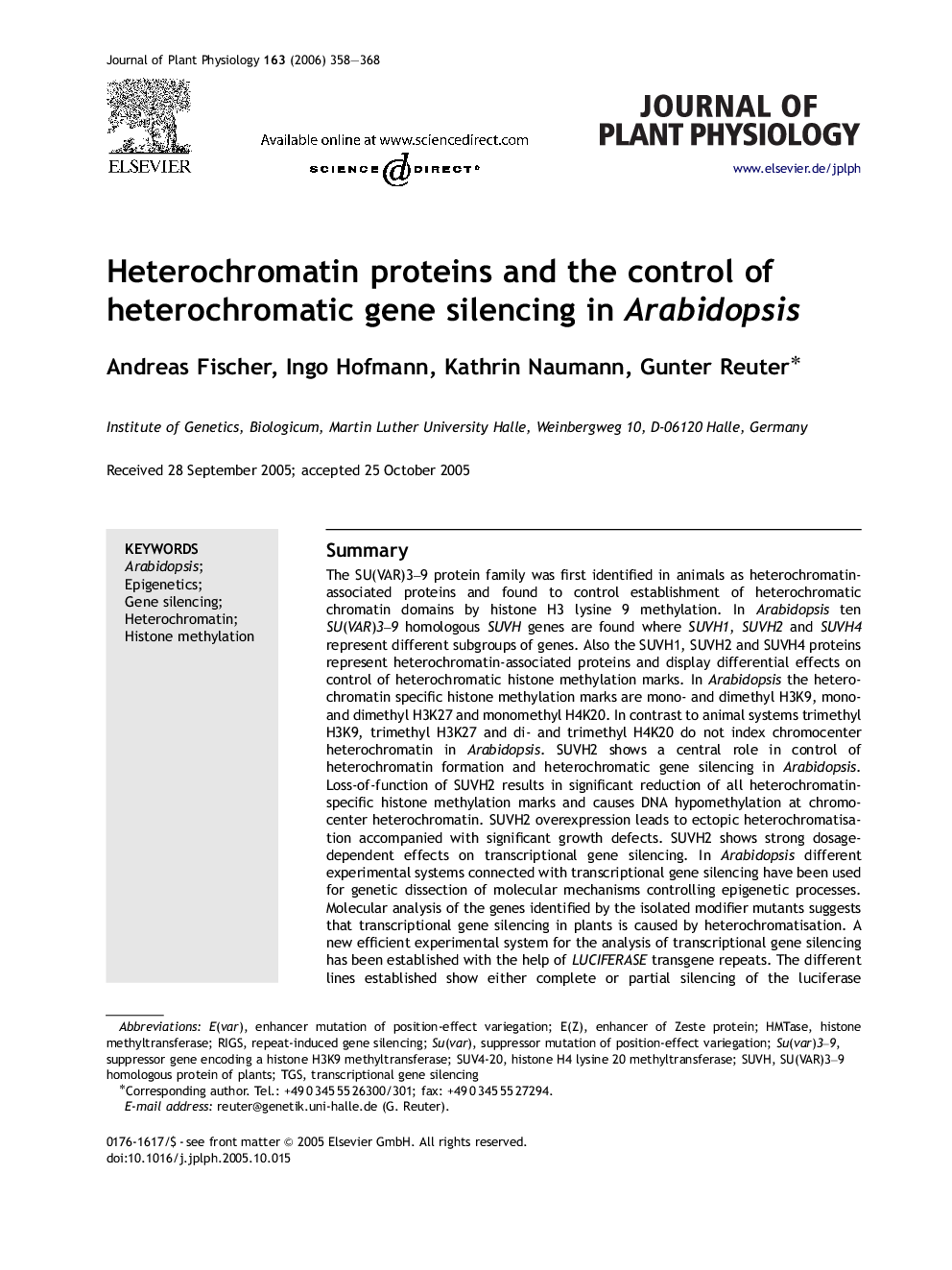| کد مقاله | کد نشریه | سال انتشار | مقاله انگلیسی | نسخه تمام متن |
|---|---|---|---|---|
| 2057536 | 1075891 | 2006 | 11 صفحه PDF | دانلود رایگان |

SummaryThe SU(VAR)3–9 protein family was first identified in animals as heterochromatin-associated proteins and found to control establishment of heterochromatic chromatin domains by histone H3 lysine 9 methylation. In Arabidopsis ten SU(VAR)3–9 homologous SUVH genes are found where SUVH1, SUVH2 and SUVH4 represent different subgroups of genes. Also the SUVH1, SUVH2 and SUVH4 proteins represent heterochromatin-associated proteins and display differential effects on control of heterochromatic histone methylation marks. In Arabidopsis the heterochromatin specific histone methylation marks are mono- and dimethyl H3K9, mono- and dimethyl H3K27 and monomethyl H4K20. In contrast to animal systems trimethyl H3K9, trimethyl H3K27 and di- and trimethyl H4K20 do not index chromocenter heterochromatin in Arabidopsis. SUVH2 shows a central role in control of heterochromatin formation and heterochromatic gene silencing in Arabidopsis. Loss-of-function of SUVH2 results in significant reduction of all heterochromatin-specific histone methylation marks and causes DNA hypomethylation at chromocenter heterochromatin. SUVH2 overexpression leads to ectopic heterochromatisation accompanied with significant growth defects. SUVH2 shows strong dosage-dependent effects on transcriptional gene silencing. In Arabidopsis different experimental systems connected with transcriptional gene silencing have been used for genetic dissection of molecular mechanisms controlling epigenetic processes. Molecular analysis of the genes identified by the isolated modifier mutants suggests that transcriptional gene silencing in plants is caused by heterochromatisation. A new efficient experimental system for the analysis of transcriptional gene silencing has been established with the help of LUCIFERASE transgene repeats. The different lines established show either complete or partial silencing of the luciferase transgene repeats. These lines have been successfully used either for mutant isolation or for functional analysis of SUVH proteins in control of heterochromatic gene silencing.
Journal: Journal of Plant Physiology - Volume 163, Issue 3, 10 February 2006, Pages 358–368